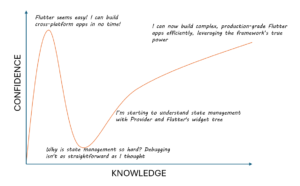In the world of web development, the debate between using GraphQL and traditional REST APIs is ongoing. While GraphQL offers a flexible and efficient approach to data fetching, full stack engineers working with Django often find that they don’t need GraphQL to achieve their goals. This article explores why Django developers can rely on custom views and serializers to provide exact data requirements, delivering a more secure and straightforward solution.
Custom Views and Serializers in Django
Django REST Framework (DRF) equips developers with powerful tools to create APIs quickly and efficiently. One of the key advantages of DRF is its flexibility in defining custom views and serializers, which can be tailored to meet specific data requirements.
Custom Views
Custom views in Django allow developers to define the logic for handling requests and returning responses. By using function-based views (FBVs) or class-based views (CBVs), developers can control how data is processed and presented. Custom views can be created to handle complex query logic, aggregations, and data transformations, ensuring that clients receive exactly the data they need.
Serializers
Serializers in DRF are responsible for converting complex data types, such as Django models, into JSON and vice versa. Custom serializers can be defined to include or exclude specific fields, apply custom validation, and handle nested relationships. This level of control ensures that the API responses are precisely tailored to the client’s requirements, without over-fetching or under-fetching data.
Control Over Axios/AJAX Requests and the API
As a full stack engineer, you have complete control over both the Axios/AJAX requests on the client side and the API on the server side. This means you can precisely define how data is requested, processed, and returned. By crafting tailored Axios/AJAX requests, you can ensure that your API endpoints only return the necessary data, optimizing performance and reducing payload size. This tight integration between the frontend and backend eliminates the need for GraphQL’s flexibility, as you can already achieve efficient and precise data fetching through well-defined REST endpoints.
Security Considerations
Security is a critical aspect of any web application, and Django’s robust security features provide a solid foundation for building secure APIs. Custom views and serializers offer several security advantages over GraphQL:
Granular Permissions: Django’s built-in authentication and permission system allows developers to enforce fine-grained access controls on a per-view basis. This ensures that only authorized users can access or modify specific data.
Input Validation: Custom serializers provide comprehensive input validation, preventing malicious data from being processed by the server. By defining strict validation rules, developers can protect their applications from common security vulnerabilities such as SQL injection and cross-site scripting (XSS).
Simplified Query Logic: Custom views eliminate the need for complex query construction that can be prone to errors and security flaws. By controlling the logic directly, developers can ensure that queries are executed safely and efficiently.
Efficiency and Performance
While GraphQL is known for its efficiency in fetching data, Django’s custom views and serializers can achieve similar performance benefits without the added complexity. By designing APIs that return only the necessary data, developers can minimize the amount of data transferred over the network and reduce the load on the server.
Optimized Query Sets
Django’s ORM (Object-Relational Mapping) provides powerful tools for optimizing database queries. Developers can use techniques such as select_related and prefetch_related to efficiently fetch related objects in a single query, reducing the number of database hits and improving performance.
Caching
Django offers various caching mechanisms to improve the performance of custom views. By caching the results of expensive queries or entire responses, developers can significantly reduce the time it takes to serve repeated requests.
Developer Productivity
For full stack engineers already familiar with Django, using custom views and serializers can be more productive than adopting a new technology like GraphQL. Django’s comprehensive documentation, mature ecosystem, and strong community support make it easier to develop and maintain APIs.
Rapid Prototyping
Django’s DRF allows for rapid prototyping and iteration, enabling developers to quickly build and refine APIs based on client feedback. The ability to define custom views and serializers in minutes means that changes can be implemented swiftly, without the need to learn and integrate a new technology stack.
Conclusion
While GraphQL offers a flexible approach to data fetching, full stack engineers working with Django can achieve similar results using custom views and serializers. By leveraging Django’s powerful tools, robust security features, and control over Axios/AJAX requests, developers can create efficient, secure, and tailored APIs without the added complexity of GraphQL. For many Django projects, the ability to produce exact data requirements quickly and securely makes custom views and serializers the preferred choice.




